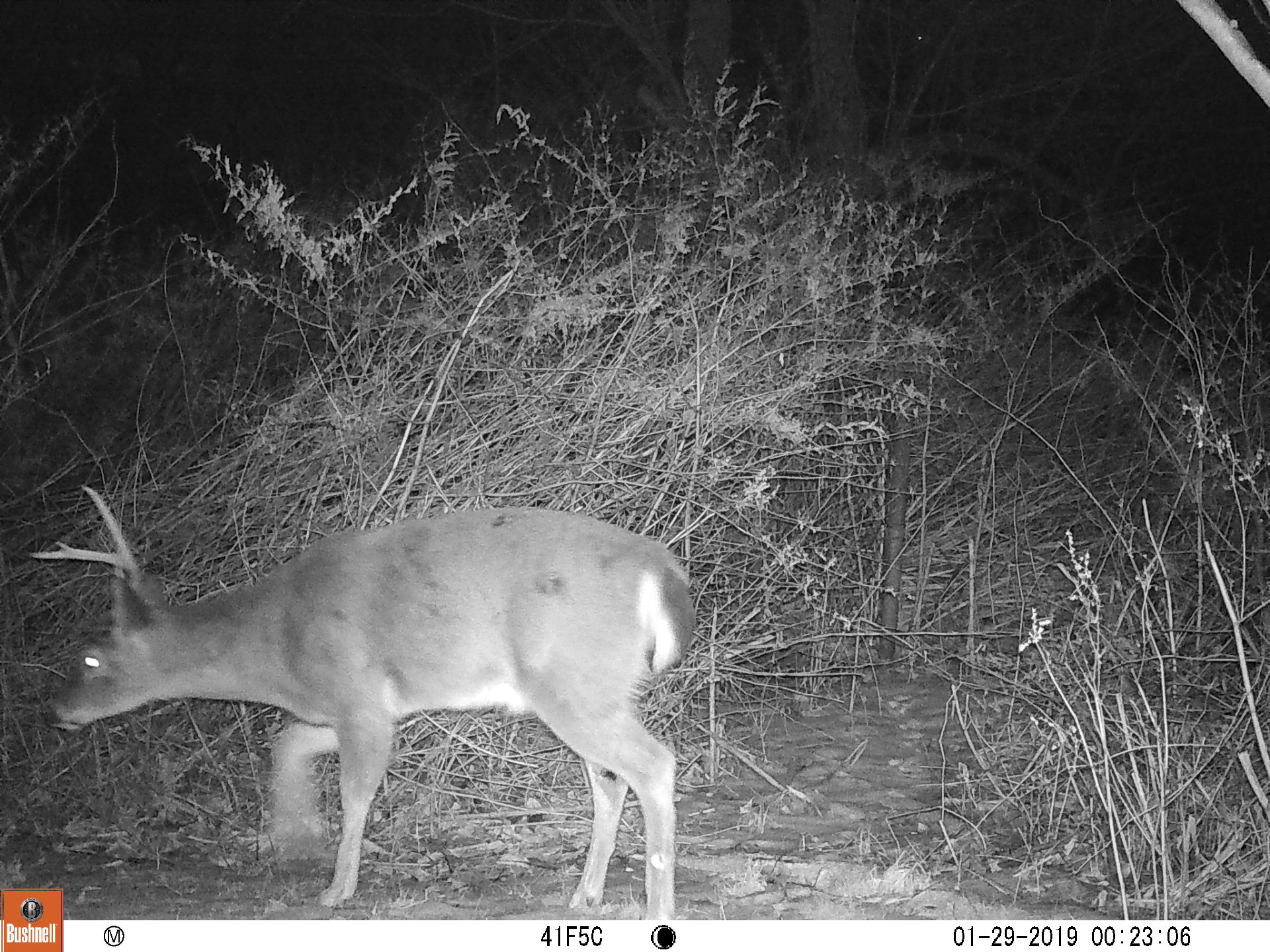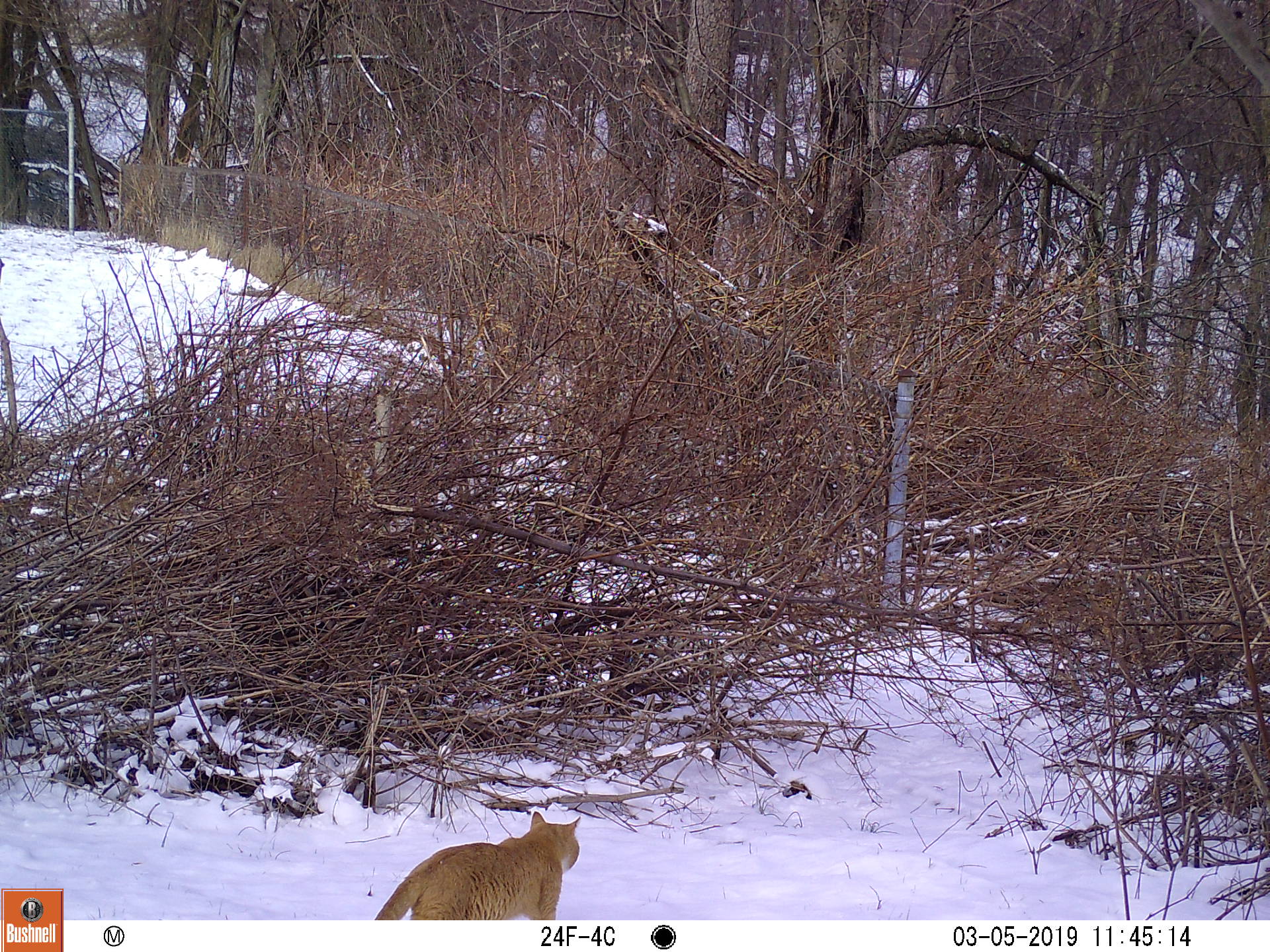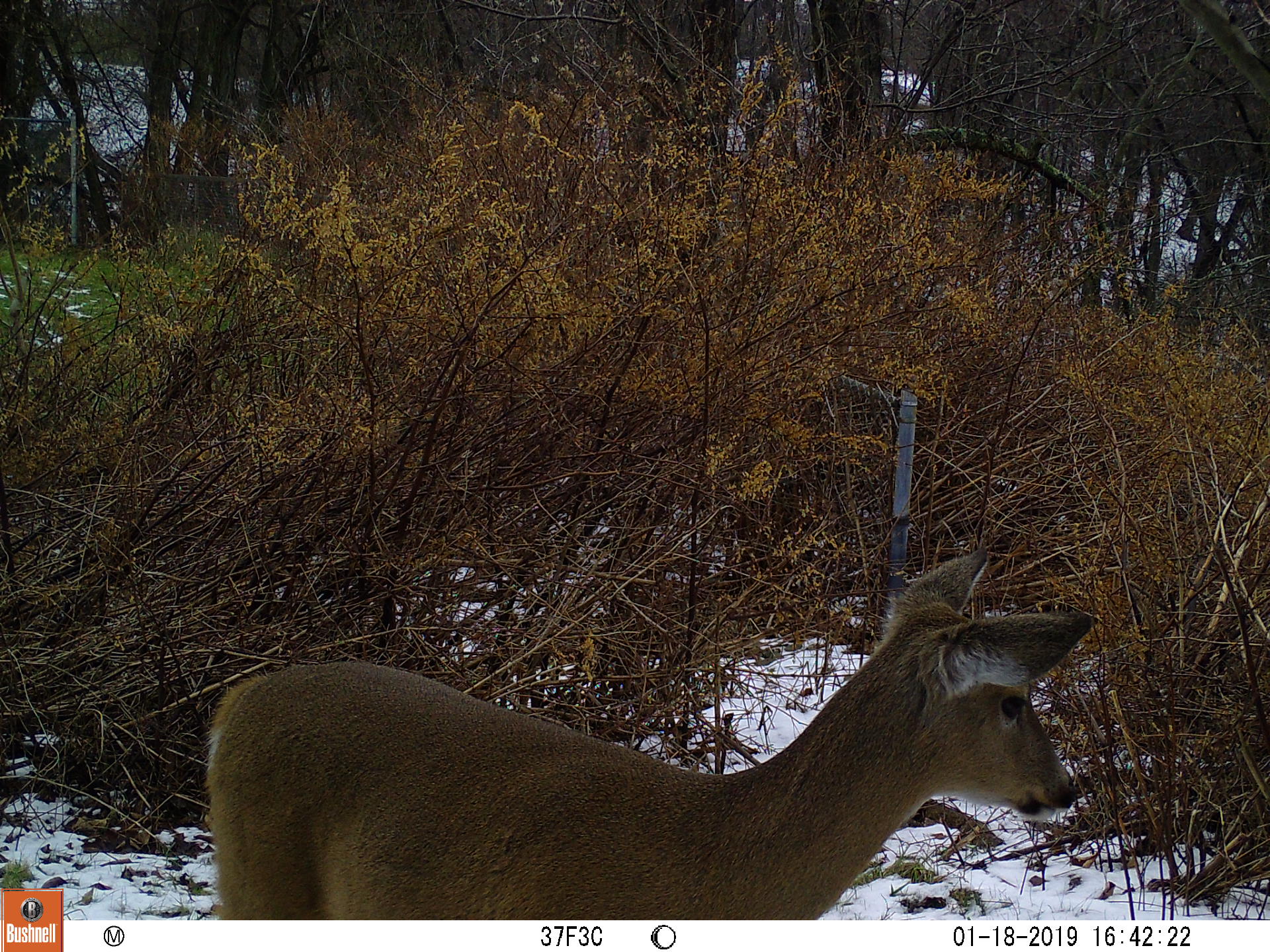Blog
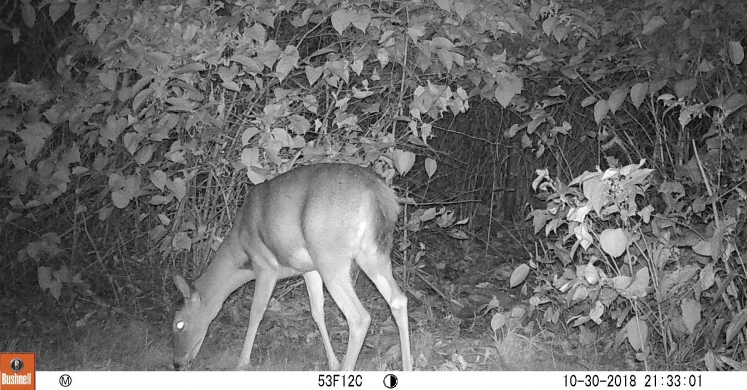
#bioPGH Blog: Bringing the Wild World into the Classroom
 A resource of Biophilia: Pittsburgh, #bioPGH is a weekly blog and social media series that aims to encourage both children and adults to reconnect with nature and enjoy what each of our distinctive seasons has to offer.
A resource of Biophilia: Pittsburgh, #bioPGH is a weekly blog and social media series that aims to encourage both children and adults to reconnect with nature and enjoy what each of our distinctive seasons has to offer.
Like many scientists and naturalists before me, I began my “career” by playing outdoors—stomping in creeks, exploring patches of woods near my house, and trekking through local parks. Mud was my friend, and I often brought home random treasures (sticks and the really cool rocks) that I had found on my adventures. I was lucky, but I didn’t realize how lucky. Not all children have the advantage of regular exposure to wilderness in its purest form, and children in urban and suburban settings often live an inaccessible distance from green spaces or parks.
We at Phipps wanted to try to bring that essence of nature into the classrooms of middle school students who may not otherwise have regular experiences connecting with the wilds of nature. Thus, (I am so excited I can finally share this with you all!) this past academic year, we have been piloting an exciting program modelled off the Lincoln Park Zoo’s Chicago Wildlife Watch.
Back in the fall, we installed trail cameras (camera “traps”) on the properties of three different schools within the Pittsburgh area to let students explore the wildlife that lives right alongside them. The results have been wonderfully exciting! The students have had to the opportunity to see that even in the city, wildlife still surrounds us.
In addition to learning more about local wildlife, the teachers involved in the project were able to use the data collected by the cameras in wonderfully creative ways for different age groups. Students at one school graphed the diversity of species found on the camera every month, and they discussed how the results differed between seasons. At another school, students performed a habitat study—learned what the different animals that they saw needed to survive, and then created their own habitat for imaginary gnomes based on what they learned about native wildlife (love it!)
Below is a sampling of the images that the cameras collected. For reference, the color photos were taken during the day and the black and white photos were taken at night (infrared LED light.) Also, each photo has a date and time stamp on the bottom, as well as the temperature at the time of the photo.
All of the cameras noted an abundance of Pennsylvania’s specialty: White –tailed deer.
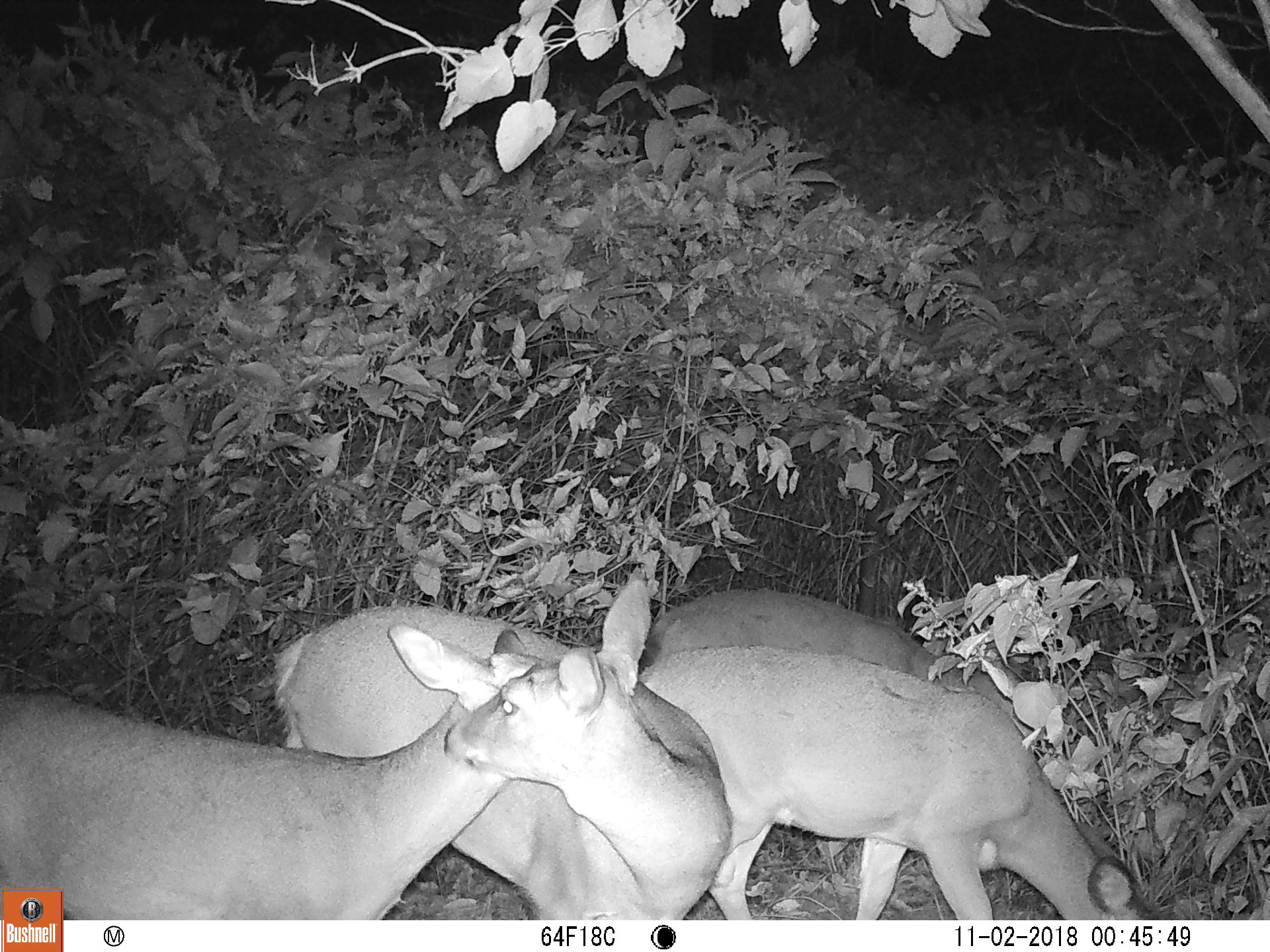
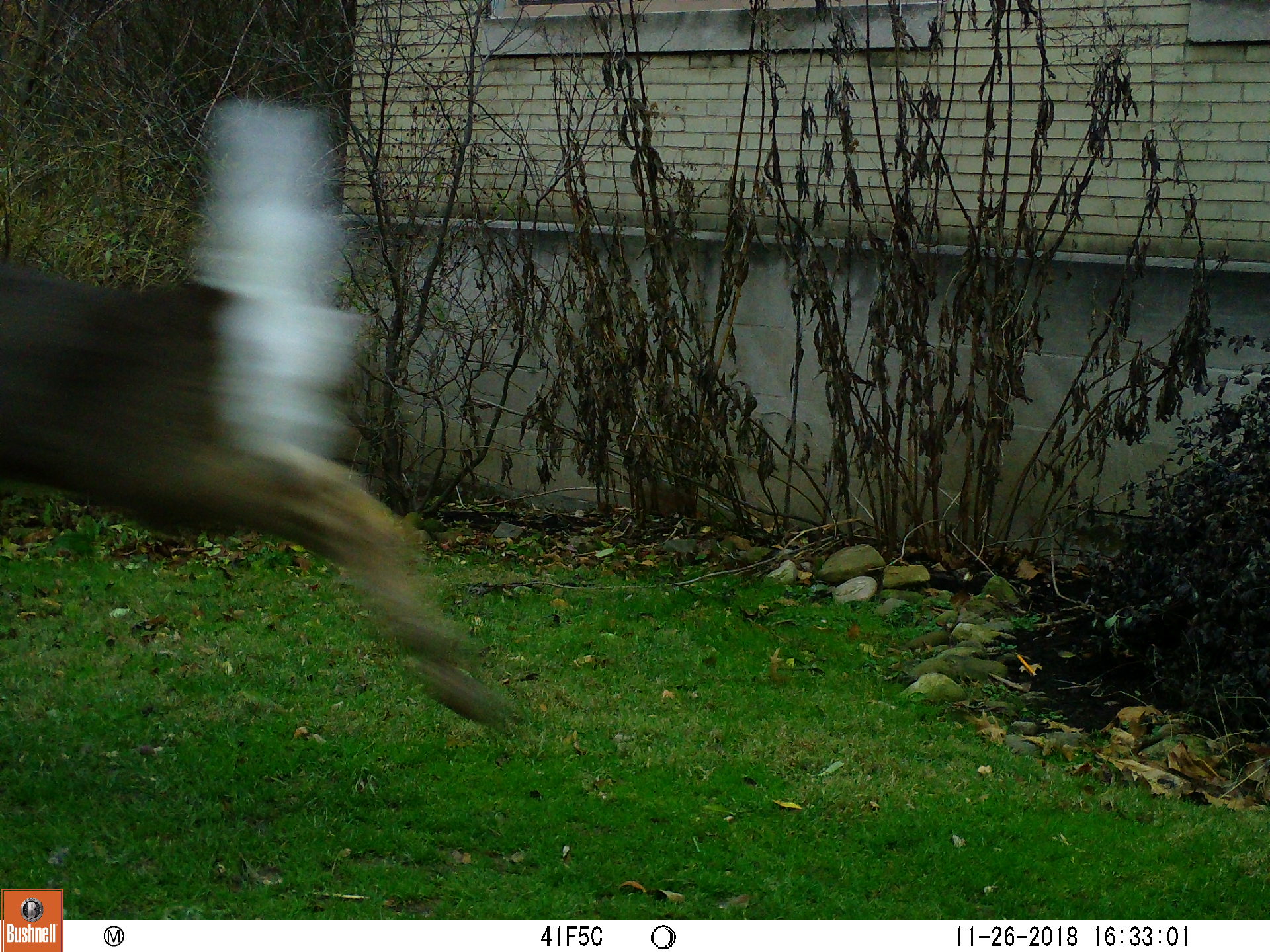
Red Fox – Throughout an entire academic year, this species was only spotted once. Quite exciting, though!
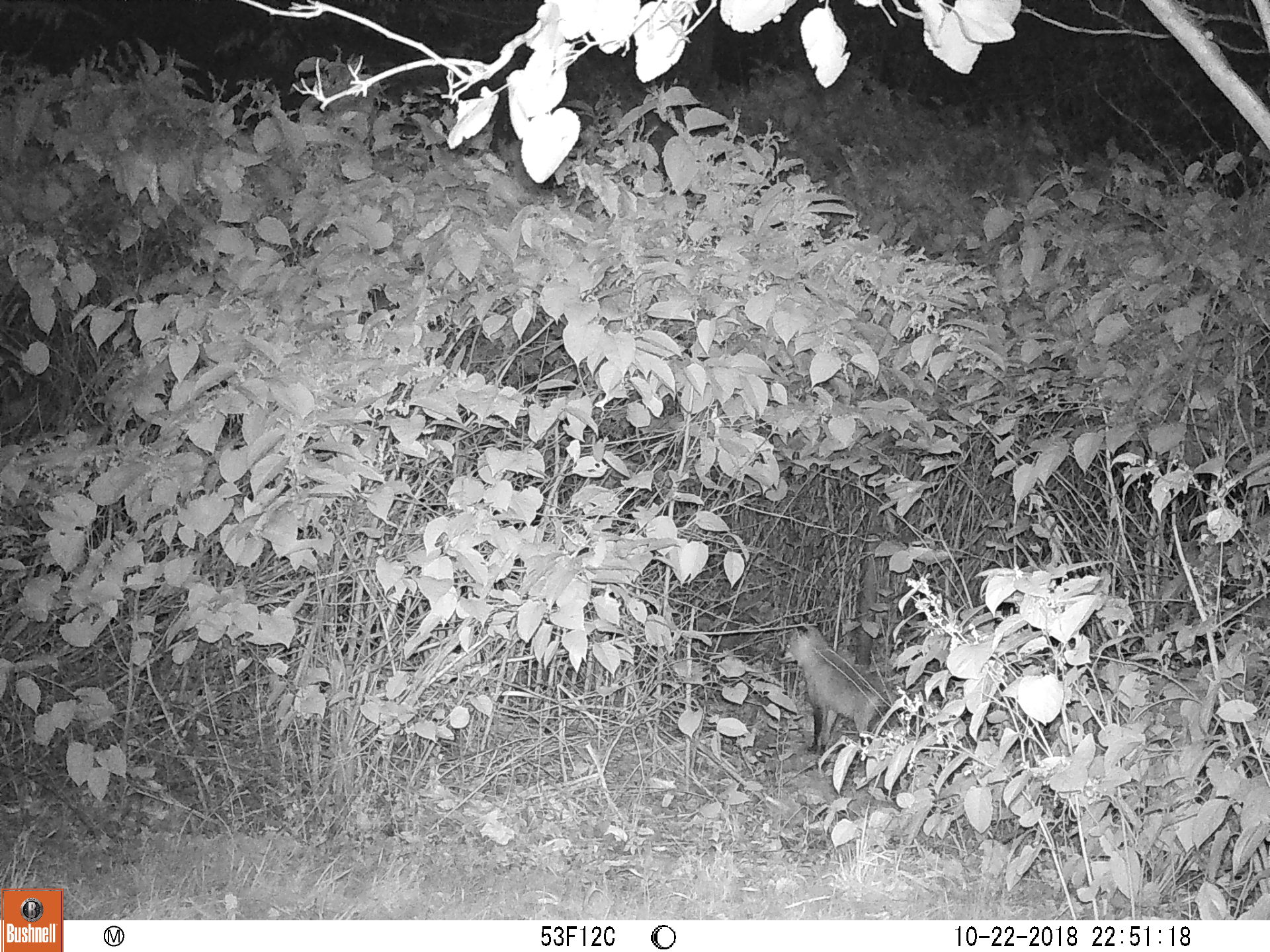
Raccoons were a familiar sight.
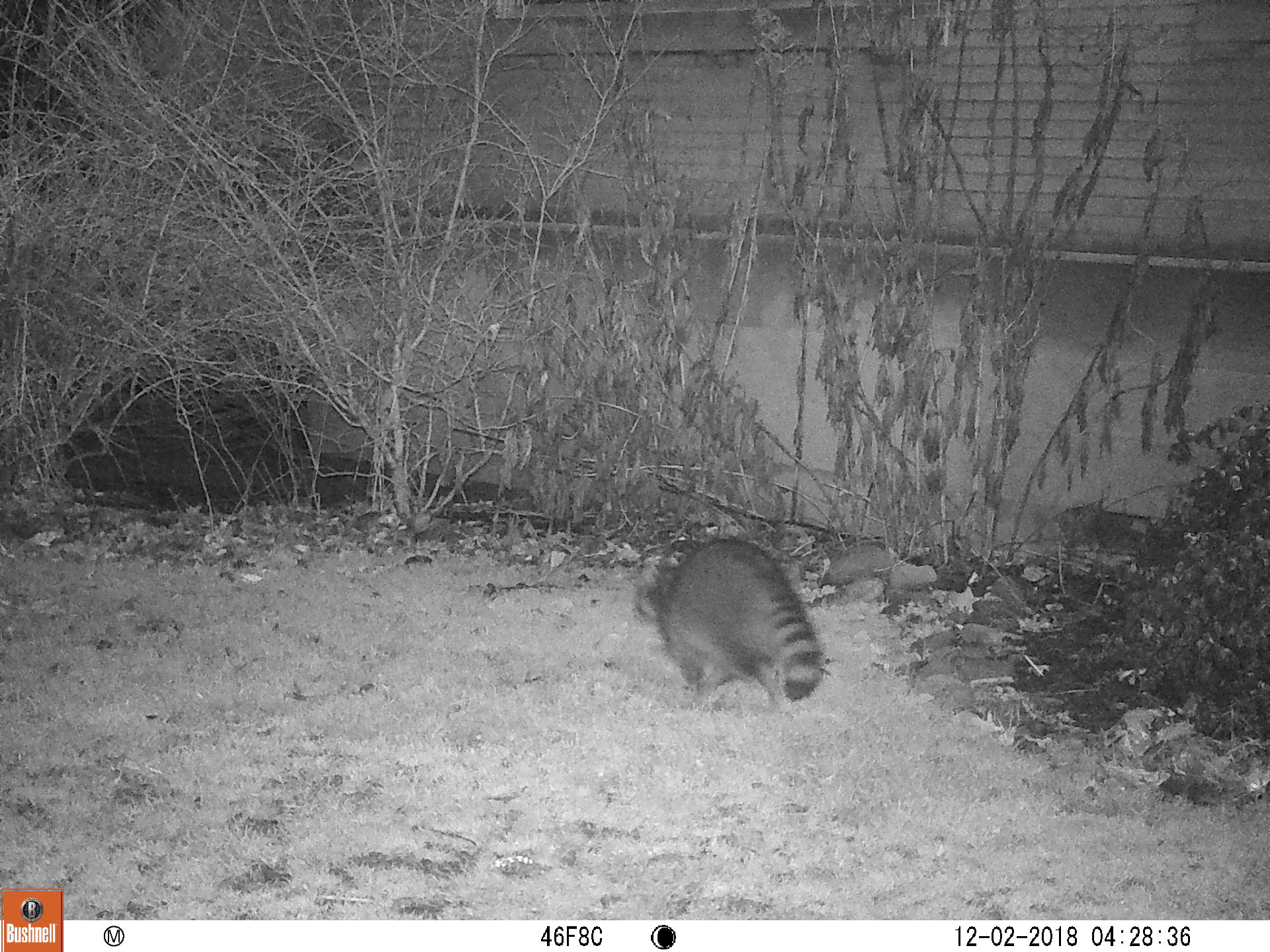
Virginia Opossum – and by the way, looks at the date and temperature stamp here. That night, it was 51°F on December 2, at 8:14 pm.
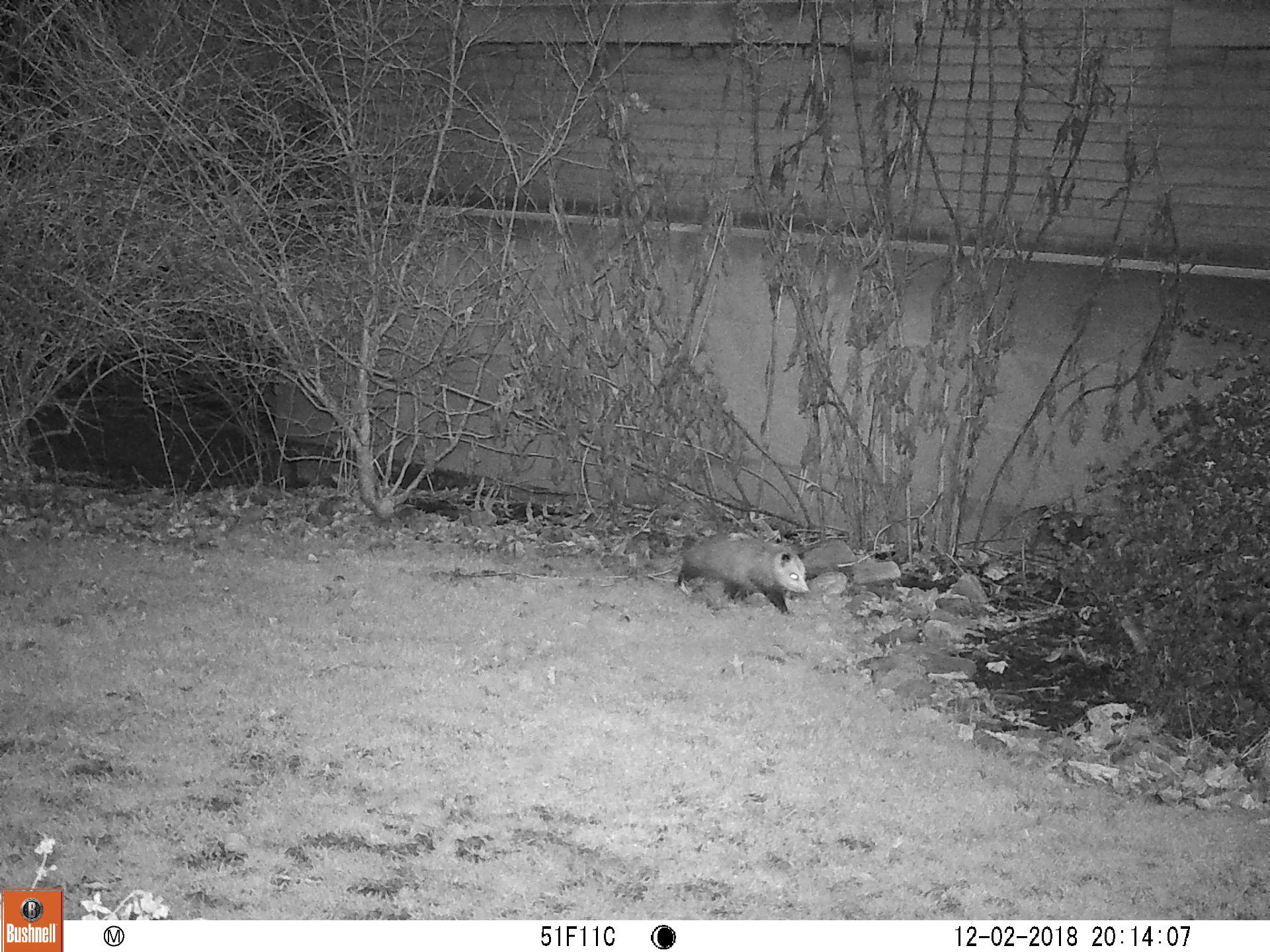
We also noticed the presence of feral/domestic cats at all three schools, which can be problematic for local bird populations.
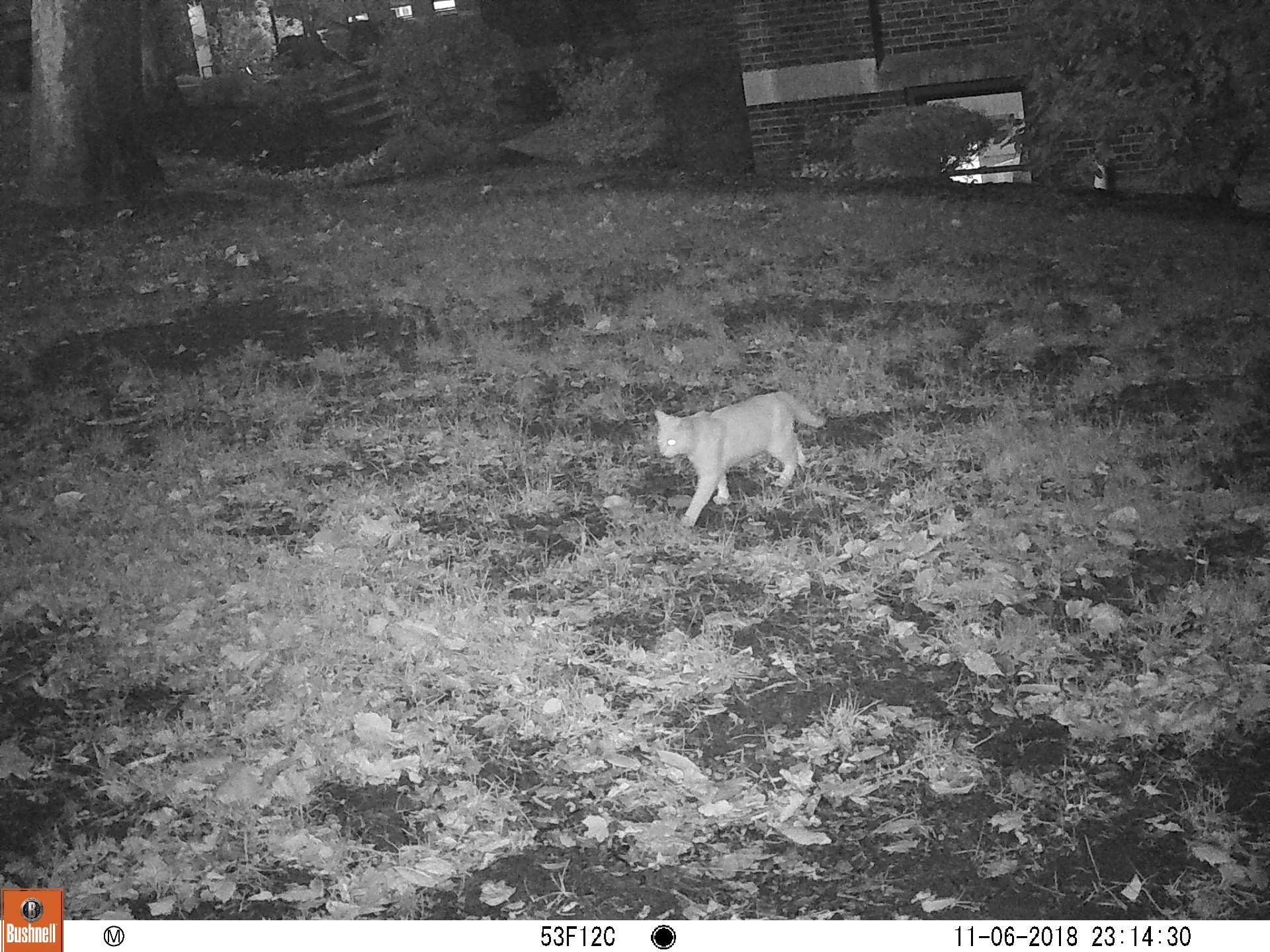
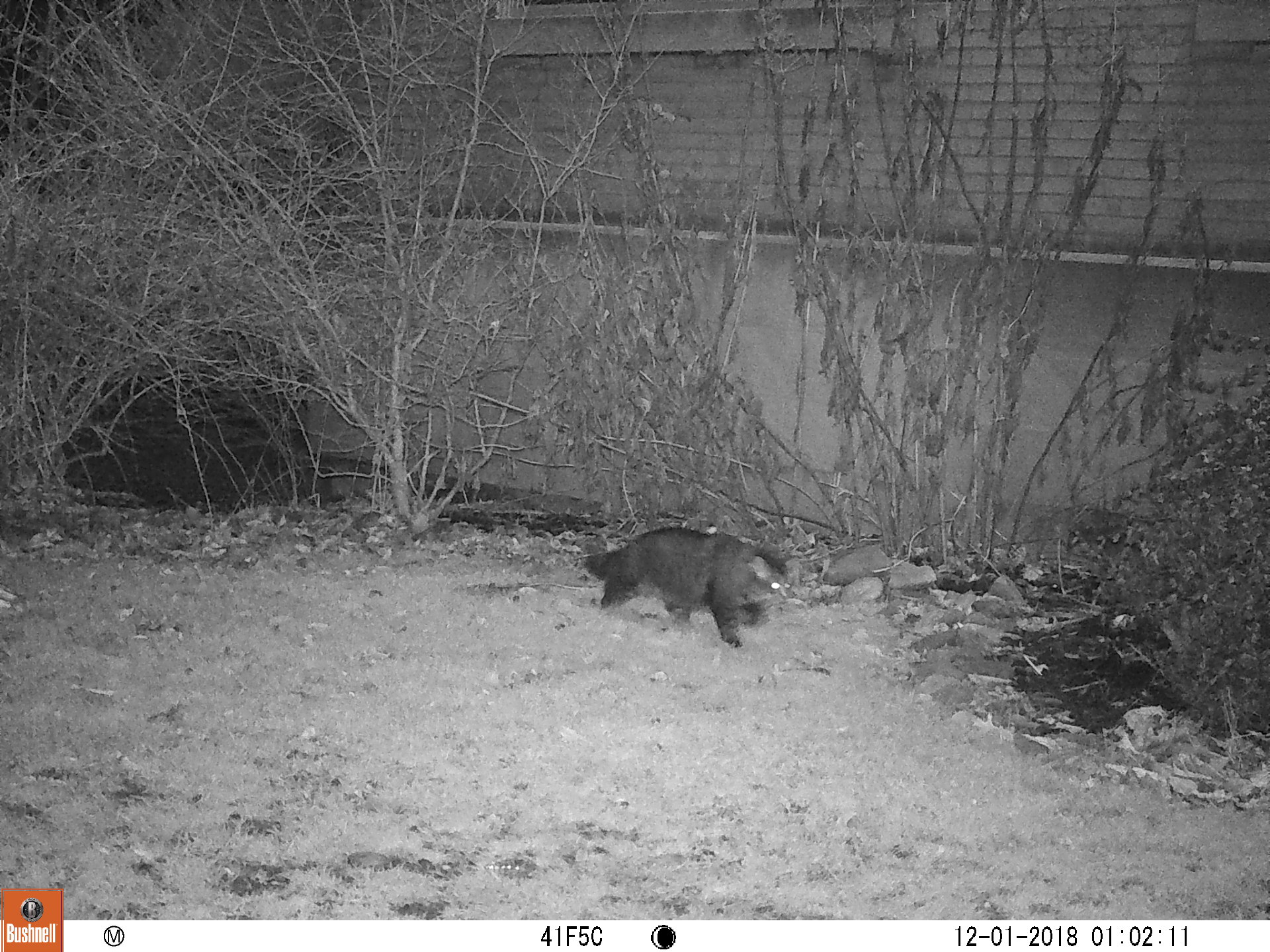
Coyote – Our county has a strong coyote population, though we will rarely see them.
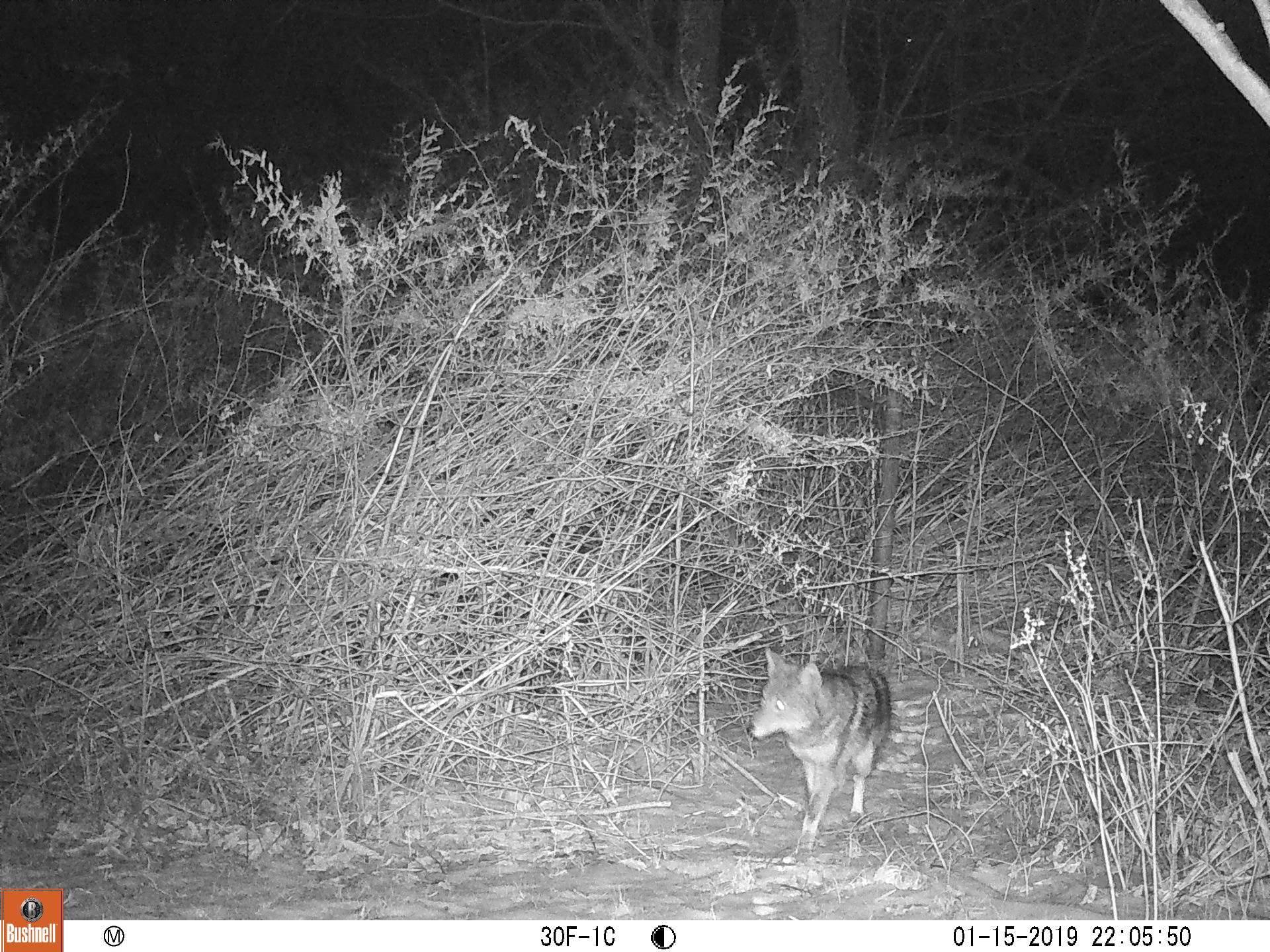
The cameras were also a fascinating way to watch the landscape change across the seasons. These images were taken from the exact same vantage point, but what a difference three months can make!
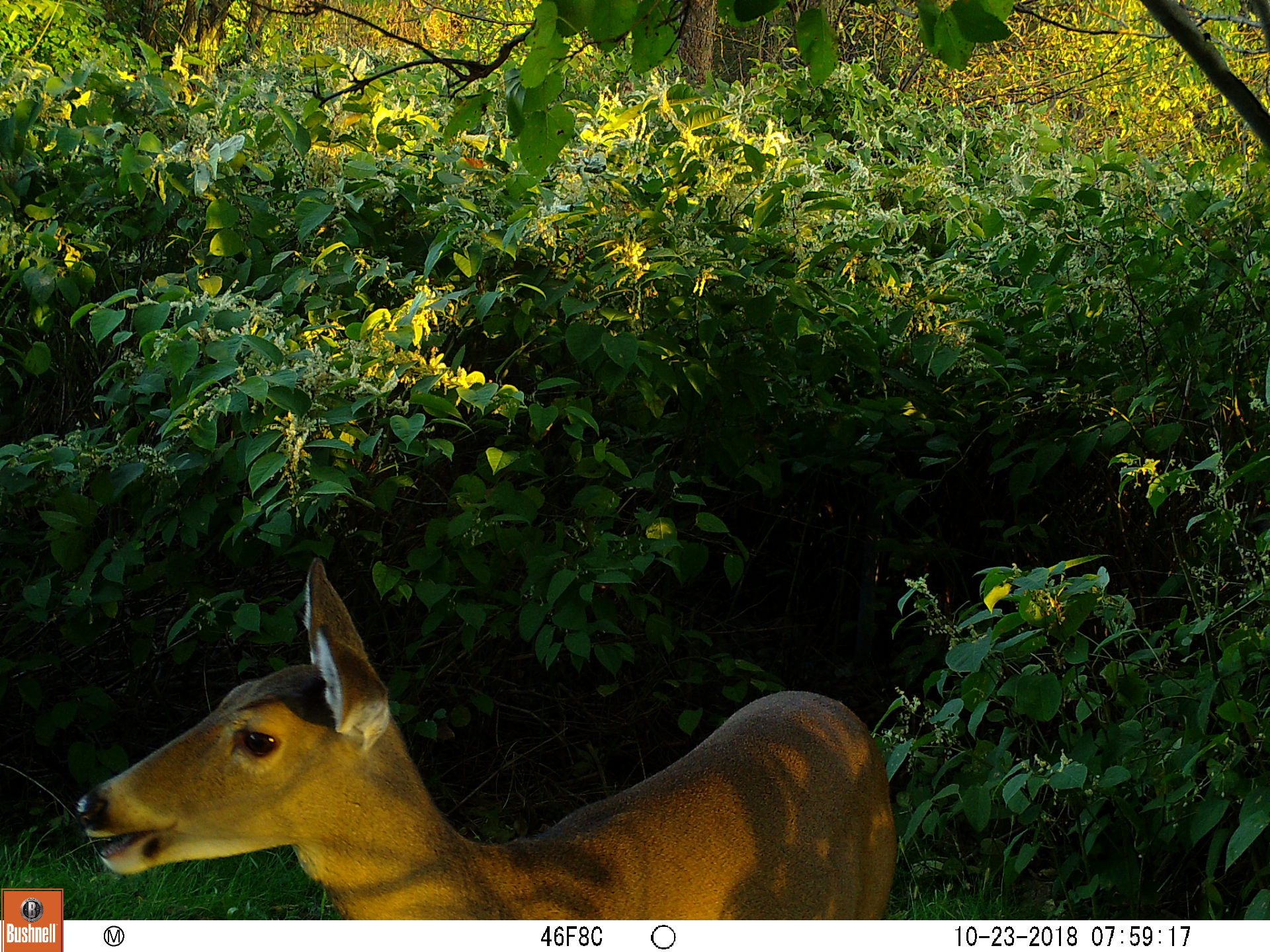
One of the teachers we worked with for this project remarked: “{My students} were so surprised by how many animals strolled through our yard - especially at night. We share this space - whether or not it is obvious all the time.”
That surprise and intrigue was exactly what we had hoped to inspire from this project. As we all go about our human day, driving in cars and working in classrooms or cubicles, there is a whole world of activity happening all around us that we often don’t even notice. Animals interact with one another, plants produce their food, our drinking water flows from a source, the soil for our food crops teams with microbial life! So whether you are appreciating a resilient little plant that has managed to peek through a crack in a sidewalk or you are in confounded awe over the raccoons who managed to problem-solve their way into your garbage can, don’t take all of that life for granted. We are all nature, and we all share this home.
If you are a teacher and this concept caught your attention, check out our Urban Wildlife Monitoring fieldtrip that was built around this project, or if you’re interested in getting involved next year, email me at mwheeler-dubas@phipps.conservatory.org (we have an application process for a limited number of cameras.)
Connecting to the Outdoors Tip: Even if you don't have a camera to watch for wildlife, the next time you are at a park or even in your backyard, try to be as still as possible for 10-15 minutes. Listen to the sounds you hear. Do any of the bird calls sound closer at the longer you are still? Or, try looking at a small patch of earth for 10 minutes. When you first look at it, you see plants and dirt...but as you watch, what movement do you start to notice? What is the smallest living thing you see? After watching for a few minutes longer, do you start to notice anything smaller than your original assessment?
Continue the Conversation: Share your nature discoveries with our community by posting to Twitter and Instagram with hashtag #bioPGH, and R.S.V.P. to attend our next Biophilia: Pittsburgh meeting.
